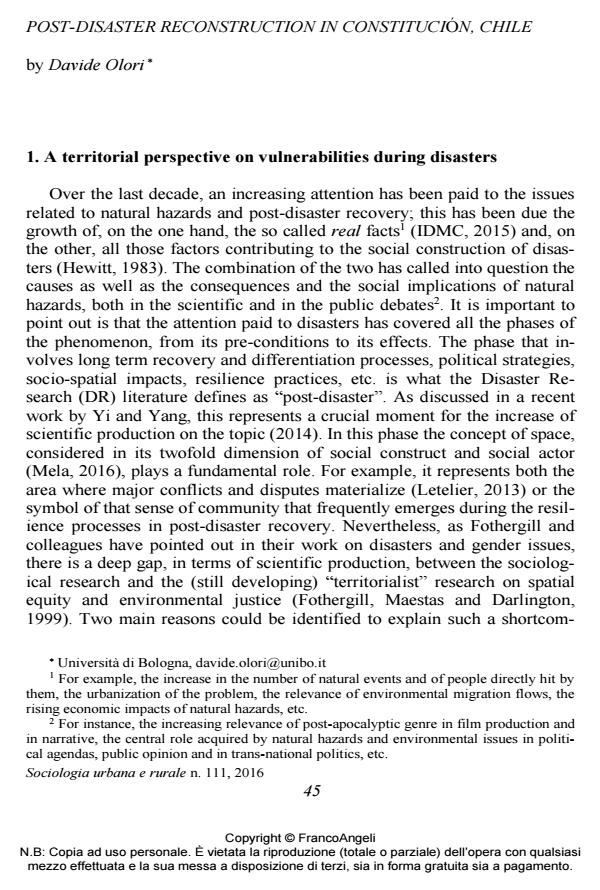Post-disaster reconstruction in Constitución, Chile
Journal title SOCIOLOGIA URBANA E RURALE
Author/s Davide Olori
Publishing Year 2017 Issue 2016/111
Language English Pages 19 P. 45-63 File size 587 KB
DOI 10.3280/SUR2016-111003
DOI is like a bar code for intellectual property: to have more infomation
click here
Below, you can see the article first page
If you want to buy this article in PDF format, you can do it, following the instructions to buy download credits

FrancoAngeli is member of Publishers International Linking Association, Inc (PILA), a not-for-profit association which run the CrossRef service enabling links to and from online scholarly content.
The post-disaster reconstruction of territories hit by an environmental disaster further stresses the existing social polarizations and the latent conflicts within the areas where the event takes place. Through a chilean case study, we hypothesize that the investigation of the ways social actors move across the city allows us to understand how people return to "normality" when forced to re-organize their lives in the post-disaster phase.
Keywords: Reconstruccion, vulnerability, disaster, Constitución, socio-spatial dynamics, social inequality.
Davide Olori, Post-disaster reconstruction in Constitución, Chile in "SOCIOLOGIA URBANA E RURALE" 111/2016, pp 45-63, DOI: 10.3280/SUR2016-111003